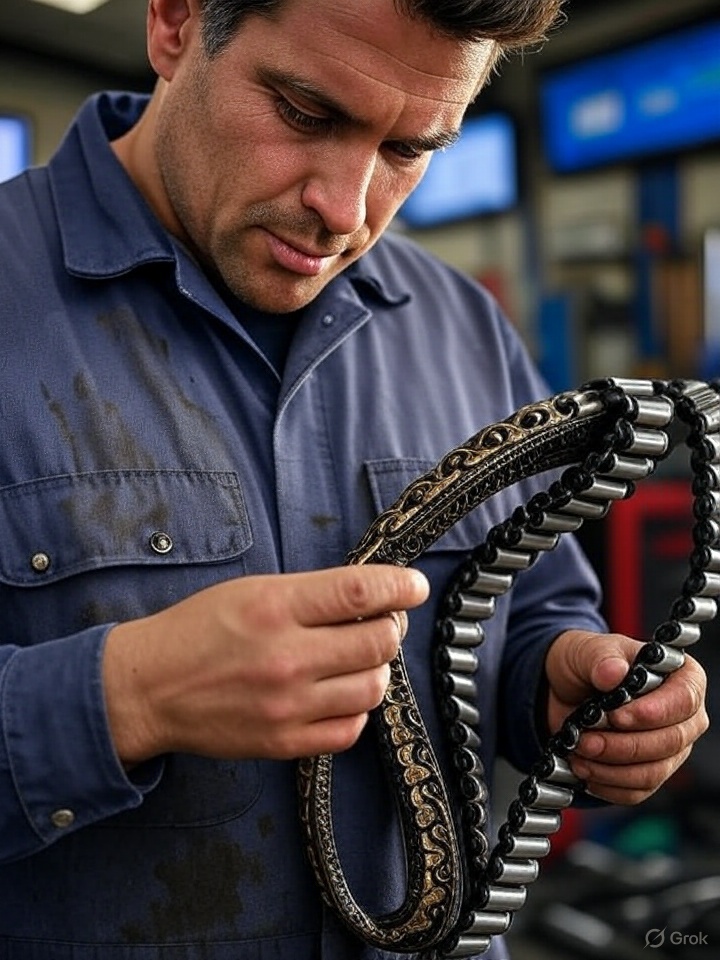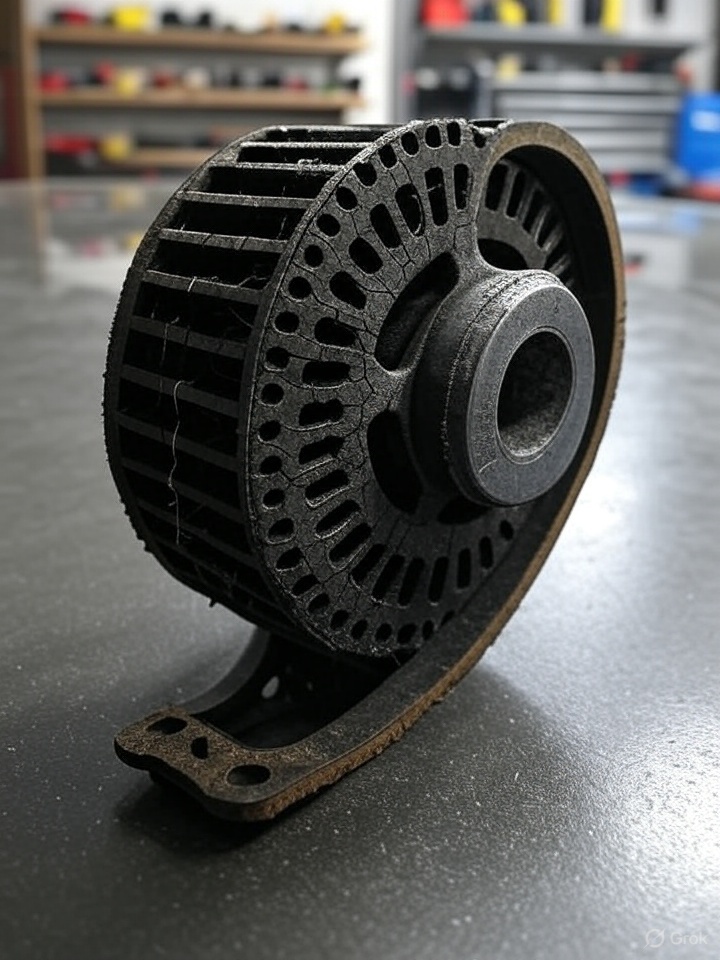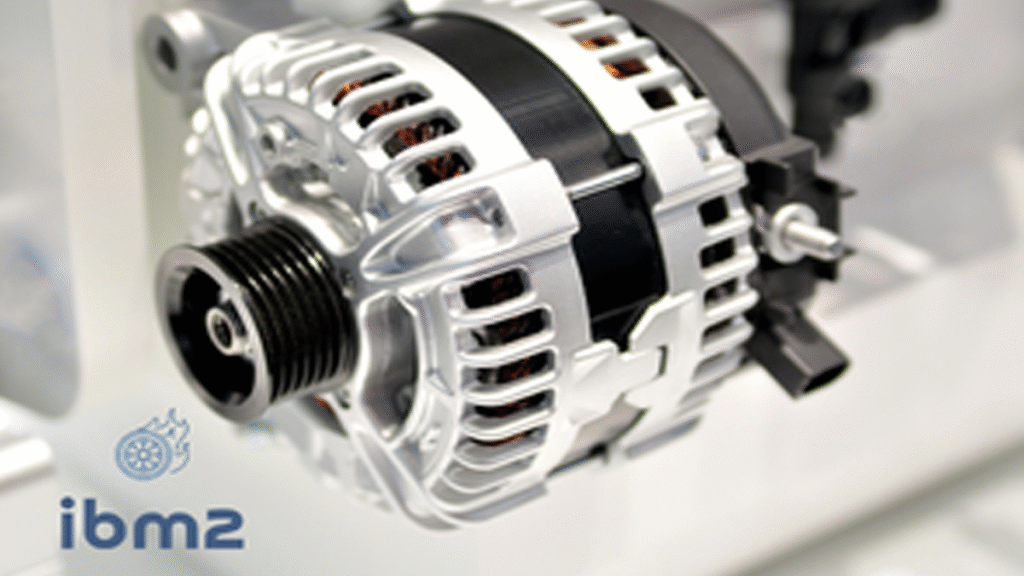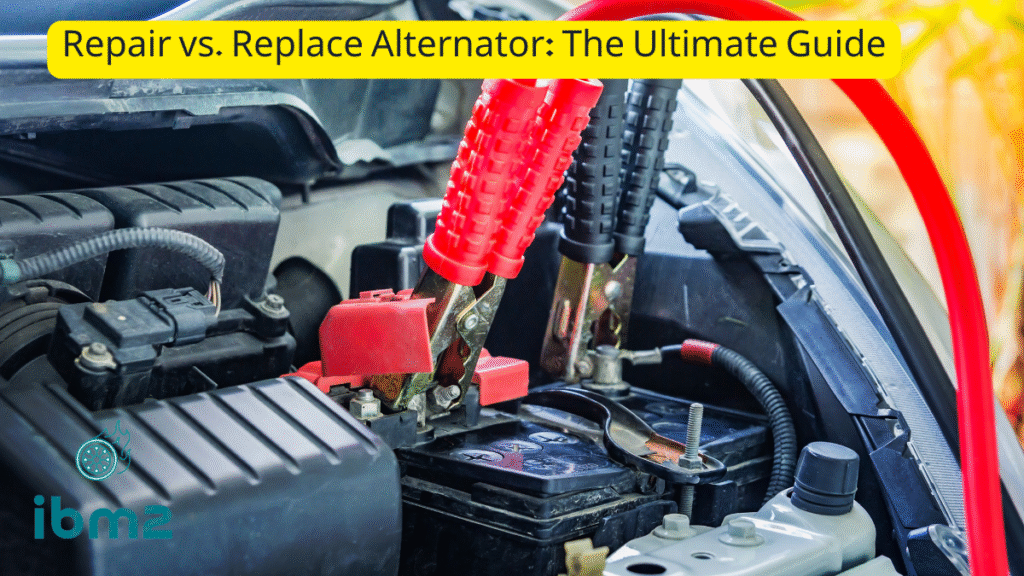Introduction: The Silent Workhorse Under Your Hood
You’re driving down the highway when you hear it—a high-pitched, incessant squealing from under the hood that gets worse when you accelerate. Or perhaps your dashboard suddenly lights up with the dreaded battery warning light, but your battery is fairly new. While many drivers fear the worst (and most expensive) scenarios like a failed alternator, the culprit is often far simpler and more affordable to fix: the alternator belt.
This unsung hero of your engine bay is responsible for transferring power from the engine to critical components like the alternator, power steering pump, and air conditioning compressor. When it wears out, it doesn’t just make noise; it can leave you stranded.
This comprehensive guide will demystify the alternator belt replacement cost, explain the factors that influence the price, and empower you to make an informed decision, whether you choose to DIY or visit a mechanic.
Chapter 1: Understanding Your Alternator Belt’s Role and Types
First, let’s clarify what we’re talking about. The “alternator belt” is often used as a catch-all term, but there are two main types you might encounter:

1. V-Belt (Serpentine Belt):
This is the modern standard for most vehicles. It’s a single, long, ribbed belt that snakes around multiple pulleys, driving the alternator, power steering pump, water pump, and AC compressor simultaneously. Its failure affects almost all auxiliary systems.
2. Serpentine Belt vs. Timing Belt: A Critical Distinction
- Alternator/Serpentine Belt: Drives external accessories. Located on the outside of the engine. Failure is inconvenient but not usually catastrophic.
- Timing Belt: Controls the engine’s camshaft and crankshaft synchronization. Located inside the engine. Failure often leads to severe and incredibly expensive engine damage. This guide focuses on the alternator/serpentine belt.

Its job is simple but vital: it transfers the engine’s rotational energy to spin the alternator’s pulley, which is what allows the alternator to generate electricity and charge your battery while you drive.
Chapter 2: The Tell-Tale Signs of a Worn-Out Alternator Belt
Ignoring a failing belt is a gamble you don’t want to take. Here’s how to know if it needs attention:
- High-Pitched Squealing Noise: The most common sign. It’s often caused by a worn belt that can’t grip the pulleys properly or a belt that’s too loose. This is especially loud when starting the car or using accessories like the AC.
- Squealing that Changes with Engine Speed: The squeal gets louder and higher-pitched when you press the accelerator and may disappear at constant speed.
- Visible Cracks, Glazing, or Fraying: Pop the hood and inspect the belt. Look for deep cracks on the ribbed side, a shiny, glazed appearance (slipping), or pieces of rubber missing.
- Electrical Issues: Since the belt drives the alternator, a slipping belt can cause dimming headlights, especially at idle, or a flickering battery light. This happens because the alternator isn’t spinning fast enough to charge properly.
- Loss of Power Steering or AC: A snapped belt will immediately cause you to lose power steering (making the wheel very hard to turn) and the air conditioning will stop working.
- Smell of Burning Rubber: A severely slipping belt can create intense friction and heat, leading to a distinct burning rubber smell.
Chapter 3: Alternator Belt Replacement Cost Breakdown
Now, let’s get to the heart of the matter: the cost. The total price is a combination of parts and labor.
The Part: Serpentine Belt Cost
The belt itself is relatively inexpensive.
- Aftermarket Belt: $25 – $80
- OEM (Original Equipment Manufacturer) Belt: $50 – $120
The price varies based on your vehicle’s make, model, and engine size. Luxury and performance cars will typically have more expensive parts.
The Labor: Mechanic’s Time Cost
This is where the bulk of the cost often lies. Replacing a serpentine belt is usually a straightforward job, but accessibility is key.
- Labor Time: 0.5 – 1.5 hours
- Labor Cost (@ $80 – $150/hr): $40 – $225
The wide range depends on the mechanic’s labor rate and how difficult it is to access the belt in your specific engine bay. Some cars require removing other components to reach the belt, adding time.

Total Alternator Belt Replacement Cost: The Bottom Line
- At an Independent Mechanic: $100 – $300
- At a Dealership: $150 – $400+
- Repair vs. Replace Alternator: The Ultimate Guide
Why the range? A common Honda Civic at a local shop might cost $120, while a BMW X5 at a dealership could easily reach $400.
Chapter 4: Factors That Influence the Total Price
Why does the cost vary so much? Here are the key factors:
- Vehicle Make and Model: This is the biggest factor. Parts and labor for a luxury European car are almost always higher than for a mass-market Asian or American car.
- Labor Rates: Dealerships have higher overhead and charge more per hour ($120-$150/hr) than independent mechanics ($80-$120/hr).
- Engine Accessibility: In some cars, the belt is right on top and easy to replace. In others, it’s tucked away behind other parts, requiring disassembly and more time.
- Idler Pulleys and Tensioners: This is a critical upsell. The belt tensioner maintains proper pressure on the belt. Often, a worn-out tensioner is the actual cause of the squealing, not the belt itself.
- Replacing Belt + Tensioner: Adds $50 – $150 for the part and 0.3 – 0.5 hours of extra labor.
- While it increases the upfront cost, it prevents a premature repeat failure. A new belt on a bad tensioner will wear out quickly.
Chapter 5: DIY vs. Professional Replacement: A Realistic Look
Can You Do It Yourself?
For many vehicles, yes, this is a very achievable DIY project that can save you significant money.
- DIY Cost: $25 – $120 (just the cost of the belt and potentially a tensioner).
- What You’ll Need: A new belt, a ratchet set, a breaker bar (for the tensioner), and perhaps a socket specifically for your tensioner.
- The Process: The job involves using a diagram (under your hood or in the manual) to route the new belt correctly around all the pulleys. You use a tool to release the tensioner, slip the old belt off, and route the new one on.
- The Challenge: Physical space to work and having the right tools. If your vehicle requires removing components, it becomes more complex.
When to Call a Professional:
- You’re not comfortable working under the hood.
- Your engine bay is extremely cramped.
- You suspect the tensioner or idler pulleys are also bad.
- You simply value your time and want a guaranteed job.
- 7 signs of abad Alternator : how to diagnose and fix charging system Issues
Chapter 6: How to Avoid Overpaying: Pro Tips
- Get Multiple Quotes: Call a dealership and 2-3 reputable independent shops. Ask for a quote for “replacing the serpentine belt” and inquire about the condition of the tensioner.
- Ask About the Tensioner: A honest mechanic will automatically check the tensioner. If they don’t mention it, ask. It’s often wiser to replace both at the same time.
- Consider the Whole Job: If you’re having other engine work done (e.g., water pump replacement), ask if they can replace the belt and tensioner at the same time. The labor cost will be minimal since parts are already exposed.
- Don’t Ignore the Warning Signs: Addressing a squealing belt early is a $150 fix. Ignoring it until it snaps can become a $300+ tow truck and repair bill, plus the inconvenience of being stranded.
Conclusion: A Small Investment for Major Peace of Mind
The alternator belt replacement cost is one of the most manageable and predictable repairs you’ll face as a car owner. While the squealing can sound alarming, the fix is straightforward. By understanding the factors that influence the price, from labor rates to the crucial role of the tensioner, you can approach this repair with confidence.
Whether you decide to tackle it yourself and save on labor or entrust it to a professional for a guaranteed result, addressing a worn serpentine belt is a small investment that protects you from a much larger headache down the road. Listen to your car—it’s telling you what it needs.



